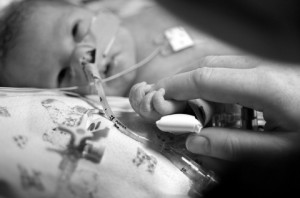Colorado Couple Files Birth Injury Lawsuit
 A married couple from Colorado Springs, CO has filed a birth injury lawsuit against the Puerto Rico hospital where their son was born and some of the doctors involved in his delivery. They claim the negligence of the doctors and the hospital staff caused their baby to suffer permanent and severe injuries.
A married couple from Colorado Springs, CO has filed a birth injury lawsuit against the Puerto Rico hospital where their son was born and some of the doctors involved in his delivery. They claim the negligence of the doctors and the hospital staff caused their baby to suffer permanent and severe injuries.
The mother visited the hospital on December 1, 2012, when she was 36 weeks pregnant, with complaints of abdominal pain. The doctor evaluated her and she had irregular contractions every five minutes. After determining the mother had bacteria in her urine and a hemoglobin of 12.5, she was discharged.
On December 15, 2012, the mother was 38 and 5/7 weeks pregnant. She went to the emergency room because she couldn’t feel her baby. An obstetric sonogram was conducted, but her physician was not notified about this procedure. A non-stress test (NST) was also performed, describing a heartbeat of 123-126 moderate variability. The mother’s contractions were six to seven minutes apart. She was discharged.
Two days later, on December 17, the mother arrived at the hospital and a nurse administered Cytotec and ampicillin. A fetal monitor was placed on the mother and a doctor evaluated her and broke her membranes. The amniotic liquid was clear.
Birth injury lawsuit
According to the fetal monitor tracing, the baby was in a satisfactory cardiorespiratory condition initially, but he subsequently presented problems revealing he was suffering a cardiorespiratory crisis and prenatal asphyxia. Around 3:45pm, she was moved to the delivery room, but after pushing for one hour, the baby still hadn’t come out. A physician was called and a VAC was applied.
The record reveals that the VAC came loose and that the procedure was repeated until pulling the baby’s head to the perineum. Backwards pressure was applied and the infant’s head came out with the umbilical cord wrapped twice around him. Dystocia was identified and suprapubic pressure was applied. The cord gases were obtained approximately 22 minutes after birth.
Around 5:30pm, the baby was received at the maternity ward and was suffering from severe hyperactivity, with no respiratory efforts and without peripheral pulse. The infant’s APGAR at one minute was one, ambu and oxygen were utilized and a code green was called. An endotracheal intubation was inserted, the healthcare team began CPR and epinephrine was administered on two occasions.
Baby suffers from fetal hypoxia
The baby was transferred to the NICU after the healthcare providers noticed a pulse and a weak respiratory effect. It was noted that the child was exhibiting involuntary movements. He was transferred to a different hospital in San German.
During labor, the baby suffered severe cardiorespiratory depression and severe prenatal hypoxia, which was unattended or treated in an untimely manner, according to the claim.
Fetal hypoxia occurs when the fetus is deprived of an adequate supply of oxygen. This condition can occur for many reasons, including umbilical cord prolapse, cord occlusion, placental infarction, maternal smoking and intrauterine growth restriction. The plaintiffs allege this cause the child’s devastating injuries.
“The medical care and monitoring of the baby’s condition during labor was negligent and departed from the accepted and recognized standards of care in medical practice,” states the claim.
The plaintiffs claim the negligent actions of the doctor, the nursing personnel at the hospital and the other co-defendants caused the baby to suffer an intracranial germinal hemorrhage and bilateral changes of cystic encephalomalacia. Consequently, the child is now in a vegetable state and will remain that way for the rest of his life.
- U.S. District Court for the District of Puerto Rico, http://www.prd.uscourts.gov/
- Radiopaedia, Fetal Hypoxia http://radiopaedia.org/articles/fetal-hypoxia


 Resources
Resources
 Resources
Resources
